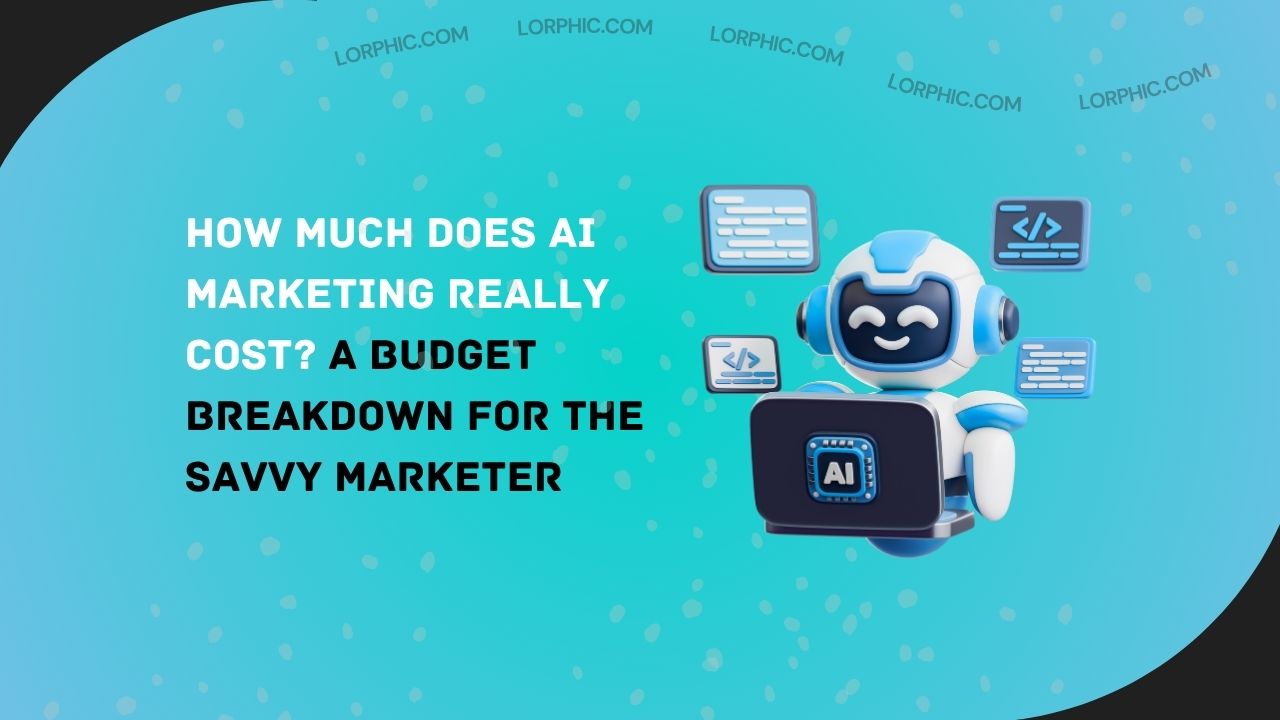Artificial Intelligence (AI) has moved from science fiction to the core of modern business, especially in digital marketing. You know it’s a powerful tool for everything from personalized emails to real-time ad bidding. But the question that keeps budget holders up at night is: How much does AI marketing actually cost?
It’s not a simple one-size-fits-all number. The price of AI marketing is less like a flat fee and more like a tiered investment, depending entirely on your business’s goals, scale, and technical foundation. In this AI marketing guide, we’ll break down the cost components, walk through the implementation process, and reveal the financial impact so you can build a perfect AI marketing budget.

AI Marketing Guide: Understanding the Cost Spectrum
The cost of AI marketing typically falls into three main areas, ranging from a few hundred dollars to hundreds of thousands annually.
1. Tool/Software Subscriptions (The Entry Point)
This is the most common and accessible starting point, often structured as a Software-as-a-Service (SaaS) model.
- Cost Range: $50 – $5,000+ per month.
- What it Covers:
- Basic AI Tools: Focused on a single function (e.g., content generation like Jasper, basic chatbot platforms like TARS). Costs can start as low as $50–$200/month.
- Mid-Level/Integrated AI: Tools integrated into larger platforms (e.g., HubSpot’s smart content, advanced email optimization, predictive analytics for ad spend). Prices typically range from $400 – $1,500/month. These often include tiered pricing based on data volume, user seats, or customer contacts.
- Enterprise AI Suites: Comprehensive platforms (e.g., Salesforce Einstein, specialized recommendation engines like Amazon Personalize) that integrate across your entire MarTech stack. These can start at $2,000 – $5,000+ per month or be priced as a custom quote.
2. Implementation & Integration (The Setup Cost)
These are the one-time, initial investments required to get the AI working effectively with your existing systems and data.
| Component | Estimated Cost Range | What It Involves |
| Data Audit & Preparation | $1,000 – $10,000 | Cleaning, centralizing, and structuring your existing customer data (CRM, website analytics) to be “AI-ready.” Crucial for accurate AI outputs. |
| Integration with MarTech Stack | $2,000 – $25,000+ | Connecting the new AI tool with your CRM, email platform, and website. Complexity (and cost) increases with the age and number of legacy systems. |
| Custom Model Development | $20,000 – $1 Million+ | Developing a proprietary, highly specialized AI model (e.g., a unique product recommendation engine or a hyper-specific lead scoring system). This is generally reserved for large enterprises. |
3. Ongoing Management & Talent (The Operational Cost)
AI doesn’t run itself. These costs cover the people and resources needed to monitor, train, and optimize the AI.
- Training and Optimization: AI models learn over time. You must allocate resources (time/money) to monitor its output and refine its rules. This ongoing cost can be 10-30% of the initial software budget.
- Specialized Talent: While AI saves time, you need skilled staff data scientists, machine learning engineers, or even an AI-savvy Marketing Manager to manage the system. A full-time salary for a skilled data professional can range from $80,000 to $150,000+ per year. For smaller budgets, a marketing agency or fractional consultant can cost $1,500 – $5,000+ per project or month.
The AI Marketing Implementation Process: 5 Key Steps
A perfect AI implementation follows a disciplined, deep-research process, not a simple download.
Step 1: Define Goals & Audit Readiness (The Why & What)
- Deep Research: Don’t just implement AI for the sake of it. Define a specific, measurable problem. Goal Example: “Reduce customer churn by 10% in 6 months using predictive analytics.”
- Data Readiness Audit: Assess your current data. Is it clean, centralized, and sufficient? Poor data quality is the single biggest point of failure for AI projects.
Step 2: Choose the Right Solution (The Tool Selection)
- Tool vs. Custom: Decide if a commercial, off-the-shelf marketing AI tool (cost-effective, faster setup) meets your needs or if you require a custom AI solution (expensive, high initial investment).
- Vendor Vetting: Scrutinize the vendor’s integration capabilities, security/privacy standards, and support. A cheap tool that doesn’t integrate with your CRM is a wasted investment.
Step 3: Data Pipeline & Integration (The Foundation Building)
- Data Unification: This is the technical lift. All relevant customer data (website behavior, purchase history, support tickets) must be funneled into a single source accessible by the AI.
- System Integration: Connect the AI tool to your marketing execution platforms (e.g., linking an AI segmentation model to your email service provider). This ensures AI’s insights can be acted upon automatically.
Step 4: Pilot, Train, and Refine (The Learning Phase)
- The Pilot Project: Launch the AI in a small, controlled campaign (e.g., A/B test a small segment of email subscribers).
- Model Training: The AI uses your real-time data to learn. The marketing team must review the results (e.g., checking if the AI’s personalized content is on-brand) and provide feedback to refine the model.
Step 5: Scale and Measure ROI (The Growth Phase)
- Gradual Scaling: Once the pilot is validated, gradually apply the AI-driven strategy to larger campaigns.
- Continuous Monitoring: AI marketing is not “set it and forget it.” Ongoing AI solution pricing includes time spent monitoring KPIs like ROI, Cost-Per-Acquisition (CPA), and time-saved on manual tasks.
The Bottom Line: Financial Impact and ROI
While the initial AI marketing cost can be a significant investment, the impact on revenue and efficiency is why companies commit to it.
- Increased Revenue from Personalization: AI-powered segmentation and personalization can lead to a 10% to 30% increase in conversion rates, according to various studies. Amazon’s AI recommendation engine, for example, is reported to generate a significant portion of its total sales.
- Lower Operating Costs: AI automates repetitive tasks like reporting, basic content drafts, and audience targeting. This frees up human marketers to focus on strategy and creativity, leading to an average reduction in marketing costs by 12.2% (Source: MY RICH BRAND research).
- Higher ROAS (Return on Ad Spend): By using predictive analytics, AI can determine the exact right moment and price to bid on an ad, or which specific customer to target, leading to a much higher return. Some businesses have reported an average ROAS increase of 300% to over 1,000% on AI-optimized campaigns.
| Investment Tier | Typical Monthly Budget | Expected Value Driver |
| Starter (Small Business) | $100 – $500 | Focus on basic automation (chatbots, ad copy generation). Value is in time saved. |
| Growth (Mid-Size Business) | $1,000 – $5,000 | Integrated tools for predictive analytics and lead scoring. Value is in optimized ad spend and increased conversion rate. |
| Enterprise (Large Company) | $10,000 – $100,000+ | Custom development, full platform integration, proprietary AI models. Value is in competitive advantage and massive revenue uplift. |
The true cost of AI marketing is not the sticker price; it’s the cost of not using it falling behind competitors who are using data to connect with customers at scale.
Frequently Asked Questions
How much does AI marketing cost per month?
AI marketing costs range from $100 to $5,000+ per month depending on your business size. Small businesses typically spend $100-500/month on basic tools, mid-sized companies invest $1,000-5,000/month, and enterprises budget $10,000+ for comprehensive solutions.
Can small businesses afford AI marketing?
Yes. Small businesses can start with AI marketing for as little as $50-200/month using tools like Jasper AI ($49/month) or basic chatbots ($99/month). Many platforms offer free trials, allowing you to test ROI before committing to paid plans.
How long does it take to see ROI from AI marketing?
Most businesses see measurable ROI within 3-6 months. Simple implementations like chatbots or email optimization can show results in 4-8 weeks, while complex custom solutions typically require 6-12 months to demonstrate full value.
What are the hidden costs of AI marketing?
Beyond software subscriptions, budget for data preparation ($1,000-10,000), integration with existing tools ($2,000-25,000), staff training (10-30% of tool budget), and ongoing optimization. These hidden costs can add 30-50% to your initial estimates.
Should I hire an agency or use AI tools myself?
For budgets under $50,000/year, DIY tools are more cost-effective. Agencies ($2,000-20,000/month) make sense when you need fast results, lack in-house expertise, or require complex custom solutions. A hybrid approach agency setup, then in-house management works best for most mid-sized businesses.
What Successful Businesses Do Differently
The companies seeing the highest ROI from AI marketing in 2025 follow a consistent pattern. They don’t buy every tool on the market or chase the latest AI trends. Instead, they focus on three critical success factors.
First, they prioritize data quality over tool quantity. Before spending a dollar on AI software, they invest 2-4 weeks cleaning their customer data, centralizing information from multiple sources, and ensuring their CRM is accurate. Poor data quality is why 68% of AI marketing projects fail the most expensive AI tool in the world can’t fix garbage data.
Second, they assign a dedicated owner. AI marketing doesn’t run itself. Successful implementations have one person (or team) responsible for monitoring outputs, refining prompts, training team members, and optimizing performance. This isn’t a “set it and forget it” technology it’s a continuous improvement process that requires consistent attention.
Third, they measure what matters. Instead of vanity metrics like “AI-generated posts published,” they track business impact: cost per acquisition, time saved per week, conversion rate improvements, and customer satisfaction scores. They know exactly how much ROI each AI tool delivers and aren’t afraid to cut tools that don’t perform.
Your Next Step
Don’t let analysis paralysis stop you from starting. The perfect AI marketing strategy doesn’t exist on day one it evolves through testing and refinement.
Choose one area where your team spends the most time on repetitive tasks. Find an AI tool with a free trial that addresses that specific problem. Test it for 30 days. Measure the results. Then decide whether to scale, optimize, or try something else.
The cost of AI marketing is transparent and manageable. The cost of waiting while your competitors gain ground? That’s the expense you can’t afford.




